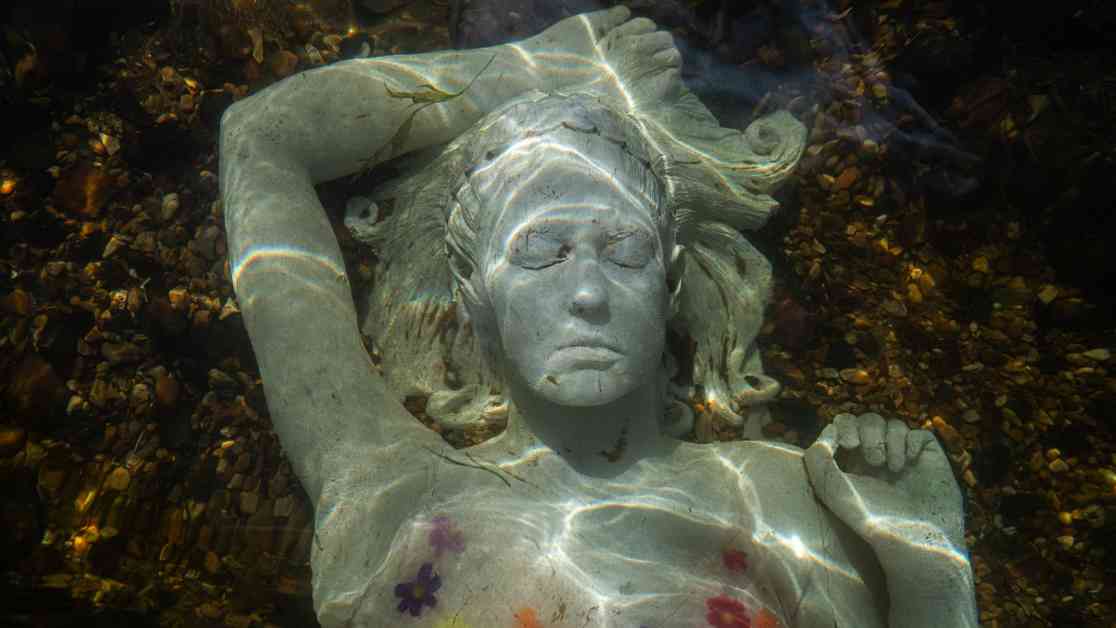Artist Jason deCaires Taylor has recently found himself at the center of controversy after unveiling a new sculpture in his hometown of Canterbury, Kent. The sculpture, titled The Alluvia, has sparked a wave of criticism and debate over its perceived themes and implications.
In response to the backlash, Taylor has expressed his surprise at the negative reactions but has welcomed the difficult conversations that the artwork has sparked. He clarified that his intention was not to offend but rather to address pertinent issues that are relevant to our current times.
The Alluvia, made from recycled glass and steel and featuring LEDs that light up at night, is based on the painting that inspired Shakespeare’s tragic heroine Ophelia. Despite its artistic inspiration, the sculpture has been met with accusations of being “tone-deaf” and “offensive” by some members of the community.
Critics have pointed out the resemblance of the submerged figure to a drowning victim, drawing connections to the tragic drownings that occur along the Kent coast. However, supporters of the artwork have defended it as a thought-provoking piece that encourages empathy and reflection on pressing social issues.
Taylor, known for his political artwork, emphasized that The Alluvia was not created with any political intentions. He highlighted the need for art to ask questions, elicit emotions, and prompt critical thinking, rather than simply aiming to please everyone. Despite the controversy surrounding the sculpture, Taylor remains firm in his belief that art should spark dialogue and provoke meaningful discussions.
One of the main criticisms of The Alluvia is its timing, as it coincides with the ongoing migrant crisis along the Kent coast. Taylor clarified that while there is no direct connection between the sculpture and the crisis, he hopes that it can inspire compassion and awareness for the plight of those affected by such tragic events.
The artist’s decision to replace two similar female forms with The Alluvia was met with mixed reactions. Some viewed the new sculpture as an improvement, while others found it disturbing and inappropriate. Taylor’s response to the negative feedback has been to encourage people to see the artwork in person before forming judgment.
Chair of Canterbury Commemoration Society Stewart Ross defended the sculpture as a piece of public art open to interpretation and discussion. He likened calls for the removal of the artwork to censorship, emphasizing the importance of allowing different perspectives to coexist.
Despite the controversy surrounding The Alluvia, Taylor remains committed to using his art as a platform for addressing pressing social issues. He believes that art should challenge viewers, provoke thought, and inspire meaningful conversations, even if it means facing criticism and backlash along the way.













